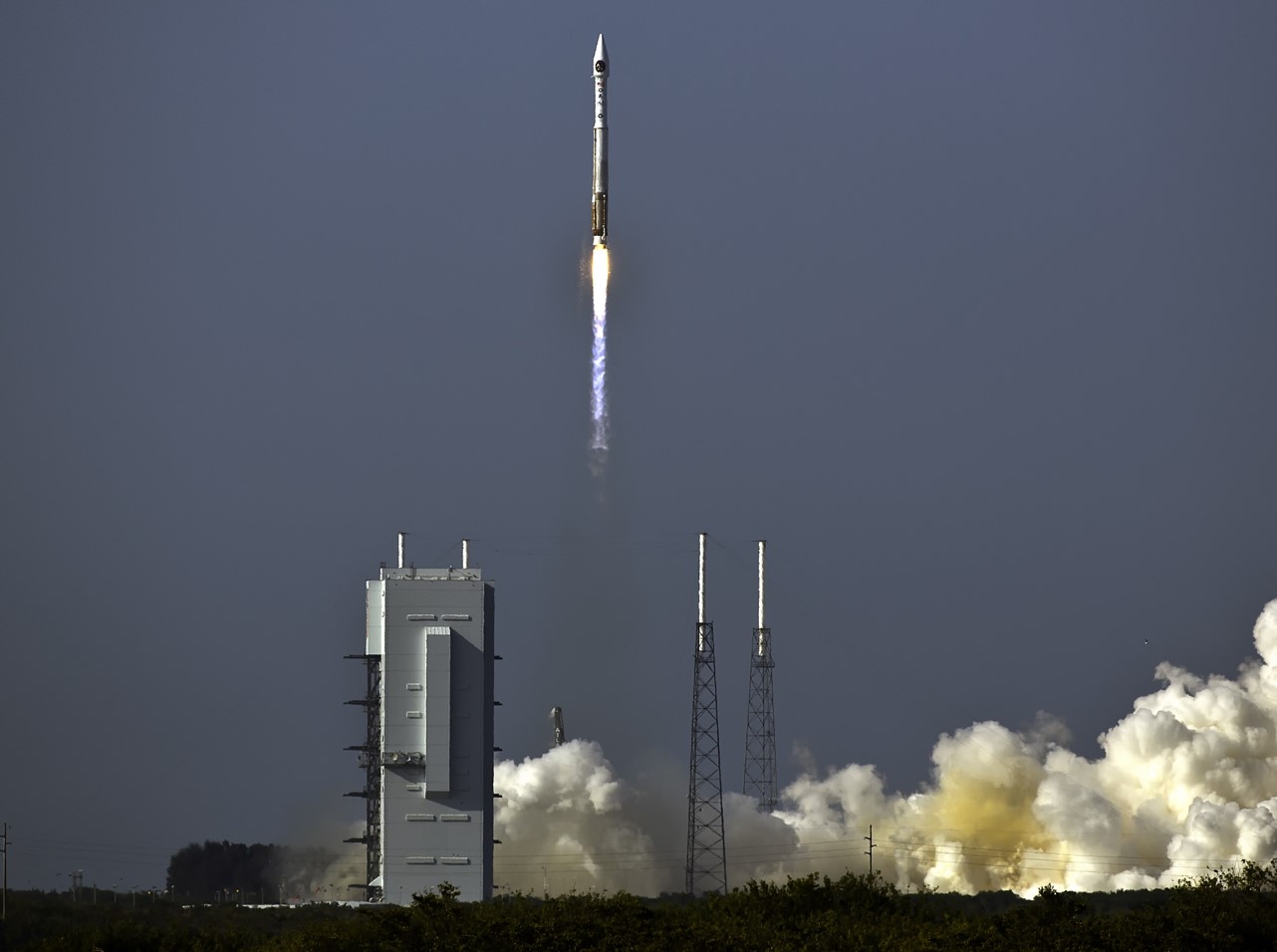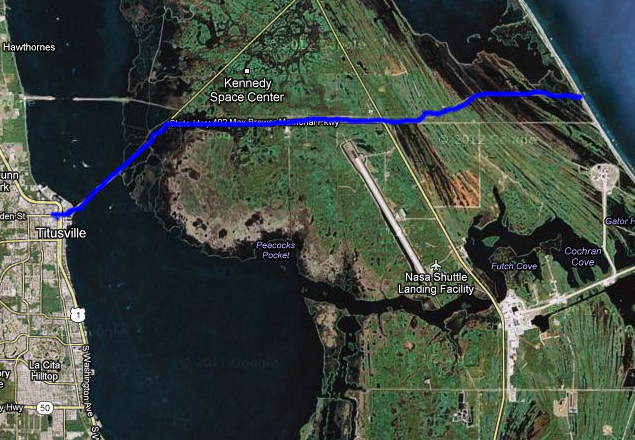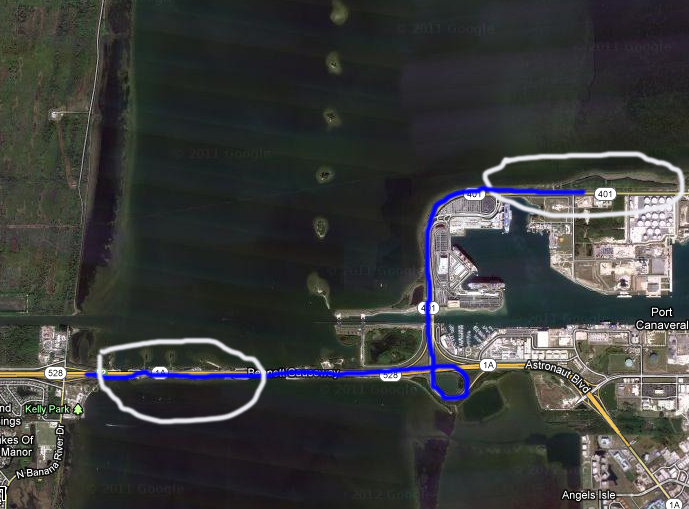
CAPE CANAVERAL, Fla — United Launch Alliance (ULA) is preparing to launch an Atlas V 551 rocket with the U.S. Navy’s Mobile User Objective System 2 (MUOS-2) satellite from Cape Canaveral Air Force Station’s Space Launch Complex 41 (SLC-41) in Florida. Liftoff is currently set to take place July 19 at 8:48 a.m. EDT. The launch window extends for 44 minutes. Currently there is only a 40 percent chance of weather providing favorable conditions for launch. If you are in town and have never watched a launch before, here’s your chance to witness one of these spectacular events.
But where? Which spots provide the best viewing opportunities? Which ones are horrible? What if you’re on a budget? Not all locations are ideal and one size does not fit all. While one spot might be perfect to view an Delta IV launch, that same spot could be terrible when viewing an Atlas or Falcon 9 launch. This is due to the sheer size of Cape Canaveral Air Force Station.
One of the best spots to view this launch from is Playalinda Beach. This is due to the virtually unobstructed view of SLC-41 and, therefore, the Atlas V. It only costs $5 to enter the park, which closes at sunset. The park can be contacted at: 321-267-1110 (call ahead, as the park might not be open during the opening of Friday’s launch window).
For those taking a cruise, Port Canaveral is also a popular viewing spot. In actuality, one can stop at almost any point on SR-528 or SR-401 behind the Port to gain a clear view of launch, as well as to experience the thrill of hearing the roar of the RD-180 engine powering it aloft. Even at a distance of 10 miles you can still hear the rocket’s engines throttle loudly as it journeys into the black.
This Atlas launch will have five solid rocket boosters attached. This means it will quickly rise off of the pad and disappear from sight—have your camera ready. Special thanks to our reader NOP 7000 for also reminding us that for those of you who are into amateur radio, you can listen to launch commentary by tuning in to 146.940 MHz.

HOW TO GET TO PLAYALINDA BEACH: Traveling along HWY-1 through Titusville, take a right onto Garden Street / Route 406. Go over the A Max Brewer Parkway Bridge. You will continue along on this road until it ends at Playalinda Beach. There is normally plenty of parking available.

HOW TO GET TO PORT CANAVERAL: Take SR-528 / Beachline toward Titusville. Once you get into the Port Canaveral area, you will take “Exit A North Terminals.” Once you cross the small drawbridge, go around the bend in the road which will take you behind the Port. If you are approaching from the east, you will travel from A1A (which will become SR-528). Be sure to arrive early, as this is a popular viewing spot and gets crowded quickly.
Want to keep up-to-date with all things space? Be sure to “Like” AmericaSpace on Facebook and follow us on Twitter: @AmericaSpace
Missions » MUOS » Missions » MUOS » MUOS-2 »




“…roar of the two RD-180 engines powering it aloft.”
The Atlas V has one RD-180 engine which contains two thrust chambers.
Also for those into amateur radio or have a radio scanner, tune to 146.940 MHz for launch commentary.
Hi NOP 7000,
Thanks for the copy-editing assist! One can make quite a few mistakes when writing late in the evening!
Sincerely and with much thanks, Jason Rhian – Editor, AmericaSpace